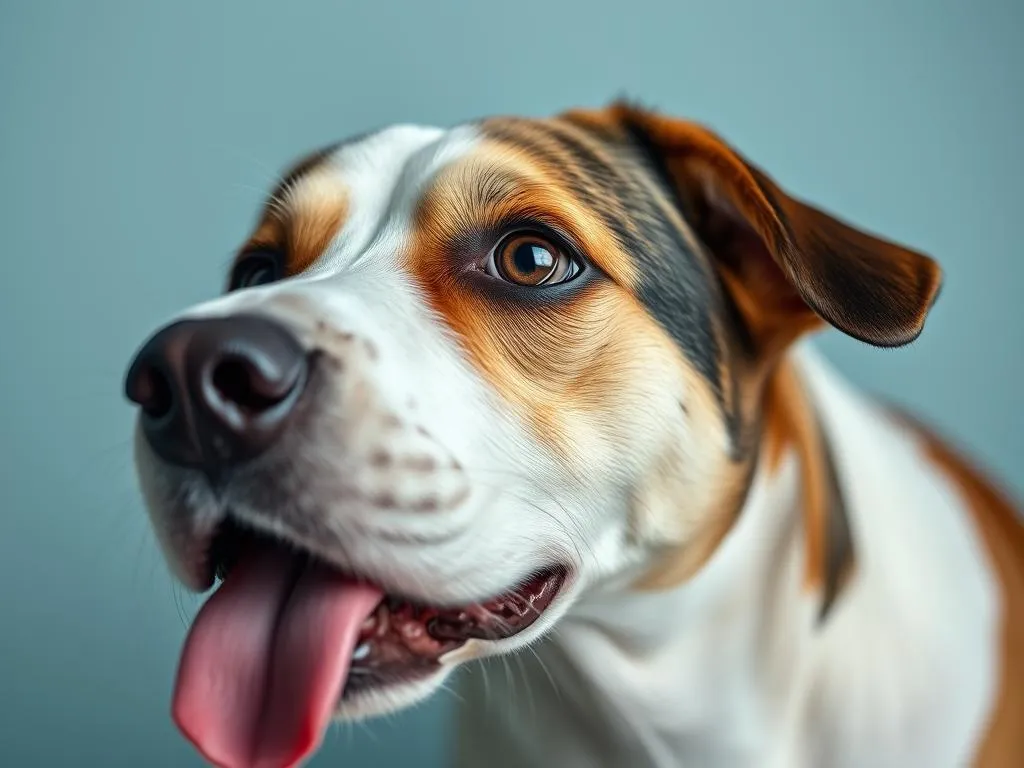
Understanding dog behavior is crucial for any pet owner. One of the most common behaviors exhibited by dogs is licking, particularly licking their owners’ faces. This seemingly simple action can hold a variety of meanings and significance in the canine world. Why do dogs lick your face? This question not only touches upon the emotional and social aspects of dog behavior, but it also opens the door to understanding canine communication, instinctual behaviors, and the bond shared between dogs and their owners.
Understanding Canine Behavior
The Importance of Canine Communication
Dogs are inherently social animals that rely heavily on body language and actions to communicate. While barking and growling are vocal forms of communication, licking is a non-verbal gesture that conveys a wide range of emotions and intentions. Understanding the role of licking in dog communication helps owners interpret their dog’s feelings and needs more accurately.
For instance, when a dog licks your face, it might be seeking your attention or affection. In contrast, licking can also be a calming mechanism for dogs, helping them soothe themselves in stressful situations. Recognizing these nuances in dog behavior can lead to a deeper bond between you and your furry friend.
Instinctual Behaviors in Dogs
Dogs are descendants of wolves, and many of their behaviors are instinctual traits passed down through generations. Licking is one such behavior that has deep roots in canine ancestry. In the wild, puppies lick their mothers’ faces as a way to solicit food and care. This instinctive behavior has not disappeared in domesticated dogs, who often display similar actions toward their human companions.
Understanding that licking is a natural behavior inherited from their ancestors helps to contextualize why dogs do it. It’s not merely a quirky habit; it’s part of their instinctual toolkit for survival, communication, and social bonding.
Reasons Why Dogs Lick Your Face
Affection and Bonding
One of the primary reasons dogs lick your face is to express affection and bond with you. Licking releases endorphins, which can create a pleasurable sensation for dogs. It’s their way of showing love and establishing a connection with their owners.
When you come home after a long day, your dog might greet you with enthusiastic licks as a way to convey their excitement and happiness to see you. This kind of licking can be thought of as a canine hug, reinforcing the emotional bond between you and your pet.
Seeking Attention
Another reason dogs lick faces is to seek attention from their owners. If a dog licks your face and you respond with laughter or petting, they learn that this behavior gets them the attention they crave. This reinforces the licking behavior, leading them to continue it in the future.
Dogs are incredibly perceptive and can quickly learn which actions will elicit a reaction from their owners. Therefore, if you find yourself being licked frequently, it may be your pup’s way of saying, “Pay attention to me!”
Stress Relief and Comfort
Licking can also serve as a coping mechanism for dogs experiencing stress or anxiety. When faced with uncomfortable situations—like loud noises or unfamiliar environments—dogs may lick their owners’ faces as a way to seek comfort and reassurance. This behavior provides a sense of security and can help calm their nerves.
If you notice your dog licking you excessively during stressful times, it may be a sign that they are seeking solace in your presence. Understanding this can help you provide the right support and comfort to your furry friend.
Taste and Exploration
Dogs experience the world predominantly through their sense of taste and smell. Licking your face may be an exploratory behavior, allowing them to gather information about you. From the food you’ve eaten to the scents you carry, licking can be their way of understanding their environment.
Moreover, human skin can be salty, especially after exercise. This taste can be appealing to dogs, encouraging them to lick your face even more. It’s their way of exploring the world around them, driven by their natural instincts.
Health and Care Signals
Sometimes, licking may have health-related implications. Dogs may lick your face as a way to communicate discomfort or illness. If they are experiencing pain or irritation, they might use licking as a signal to you that something is not quite right.
For instance, if your dog starts licking your face more frequently than usual, it could be worth observing their overall behavior. Look for other signs of distress, such as lethargy or changes in eating habits, and consult your veterinarian if needed.
When Licking Becomes Problematic
Excessive Licking and Its Causes
While licking is generally a normal behavior, it can become problematic if it turns into excessive licking. Excessive licking can be defined as licking that occurs frequently and persistently, to the point where it disrupts the dog’s daily activities or the owner’s comfort.
There are several potential causes for excessive licking, including behavioral issues, anxiety, or even medical conditions. For example, dogs that lack mental stimulation may lick more often out of boredom. On the other hand, a dog experiencing anxiety may lick as a coping mechanism.
Addressing Behavioral Issues
If you find that your dog is licking excessively, it’s essential to address the behavior promptly. Start by evaluating their environment and routine. Are they getting enough physical activity and mental stimulation? Providing interactive toys, regular walks, and training sessions can help redirect their energy and reduce licking behavior.
If the problem persists, consider consulting a veterinarian or an animal behaviorist. They can help determine whether the licking is rooted in behavioral or medical issues and provide tailored solutions.
Recognizing Health Concerns
In some cases, licking can be a clear indicator of health issues. If your dog’s licking is accompanied by symptoms like excessive drooling, licking of paws, or any changes in behavior, it may signal an underlying health concern. Common issues can include allergies, skin infections, or dental problems.
Be vigilant and look for signs that licking might indicate a health issue. Early intervention can lead to better outcomes and a healthier, happier dog.
Training and Modifying Licking Behavior
Positive Reinforcement Techniques
If you want to modify your dog’s licking behavior, positive reinforcement is one of the most effective training methods. Rewarding your dog for not licking when there are distractions can help reinforce alternative behaviors.
For example, when your dog approaches you but refrains from licking, offer them a treat or praise. This positive reinforcement will encourage them to choose other behaviors, such as sitting calmly beside you or playing with their toys.
Establishing Boundaries
Establishing clear boundaries with your dog is crucial in managing licking behavior. Make it clear when licking is acceptable and when it is not. For instance, you can teach your dog to greet you in other ways, such as sitting or lying down instead of licking your face.
Consistency is key. If you allow licking at certain times but not at others, it can confuse your dog. Be firm and consistent in enforcing these boundaries to help them understand your expectations.
Encouraging Alternative Behaviors
Encouraging your dog to engage in alternative behaviors can help reduce licking incidents. Providing interactive toys, such as puzzle feeders or chew toys, can keep your dog occupied and distracted from licking.
You can also incorporate training exercises that focus on obedience commands. Teaching commands like “sit” or “down” not only provides mental stimulation but also redirects their focus away from licking.
The Emotional Connection Between Dogs and Owners
Understanding the Human-Dog Bond
The bond between dogs and their owners is often strengthened through behaviors like licking. This intimate action can signify love, trust, and a deep emotional connection. Understanding this bond can enhance your relationship with your dog, leading to a more fulfilling companionship.
Recognizing that licking is a way for dogs to express their feelings allows owners to foster a nurturing environment. As you learn to interpret these behaviors, you can respond with love and care, reinforcing the bond between you and your canine friend.
The Role of Trust and Security
When dogs lick their owners, it often signifies a sense of trust and security. They feel safe enough to express their emotions openly, which is a testament to the bond you’ve built together. Creating a secure and loving environment for your dog ensures that they feel comfortable to express themselves.
To foster this trust, spend quality time with your dog, engage in training, and provide a stable routine. A secure environment helps your dog thrive emotionally, making them more likely to express their love through affectionate behaviors like licking.
Conclusion
Understanding why dogs lick your face provides valuable insight into canine behavior and the bond shared between dogs and their owners. From expressing affection to seeking comfort, licking is a multifaceted behavior that reflects a dog’s emotions and instincts. By observing your dog’s behavior and responding appropriately, you can enhance your relationship and foster positive interactions.
Recognizing the underlying reasons behind licking can help you manage and modify this behavior, ensuring a harmonious living environment for both you and your furry friend. With patience and understanding, you can navigate the complexities of dog behavior and enjoy a strong, loving relationship with your canine companion.









